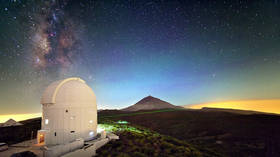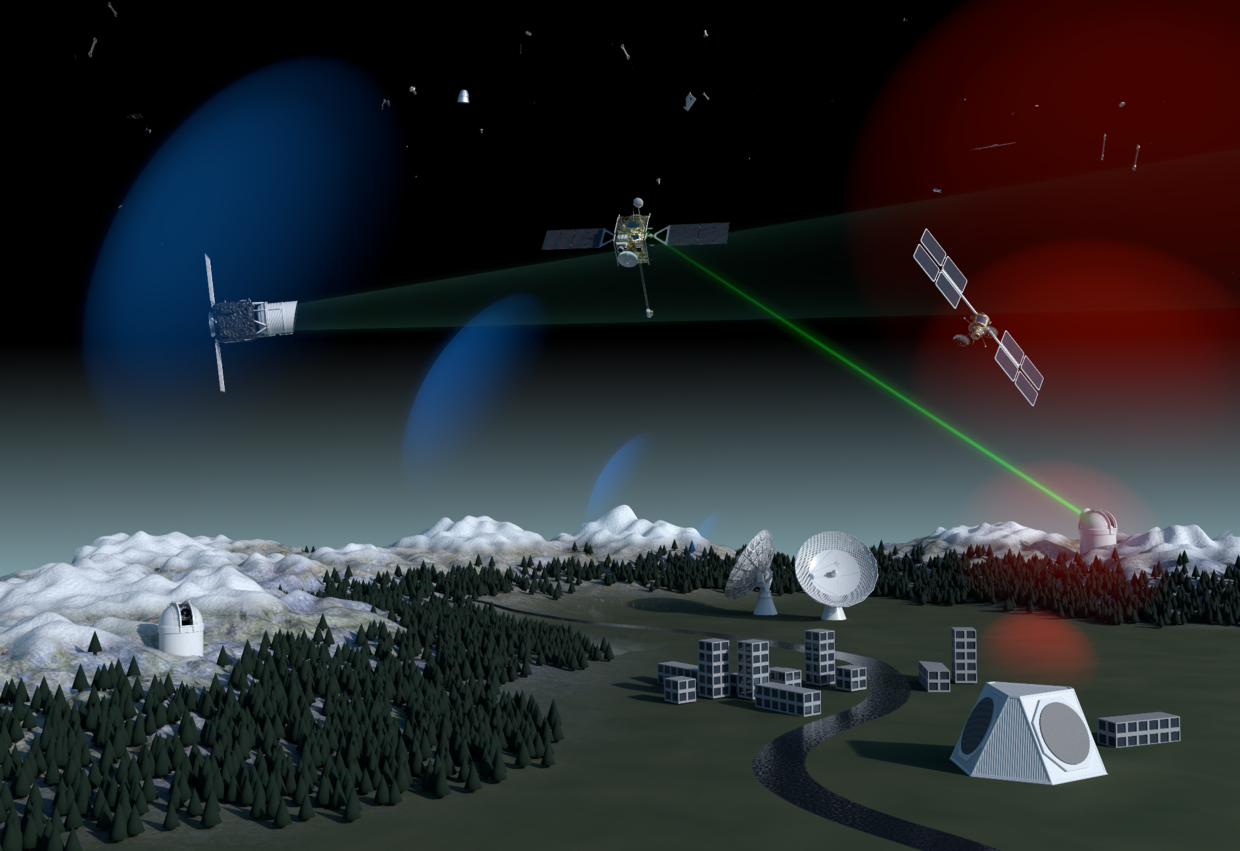Planetary defenses reinforced by new laser array that can spot ‘invisible’ space debris in broad daylight

Lasers are our go-to tool to track space debris above the Earth and help companies and nations alike avoid any unwanted contact in orbit. However, these defences have been operating under extreme limitations… until now.
One major flaw in the existing orbital monitoring system was that it had a limited window of opportunity to actually conduct the tracking, due to a lack of contrast against the sky.
While the ‘laser-ranging’ station on Earth is in darkness, sunlight glare off objects in higher orbits precluded them from study and tracking until researchers made a breakthrough.
Using a new laser-ranging method that combines specialized telescopes, detector arrays and filters which act on specific wavelengths, scientists successfully increased the contrast of objects relative to the daylight sky, thus expanding the observation window dramatically.
Skygazing spotters can now improve their orbital predictions for objects, keeping valuable spacecraft and crew safer than ever before from the vast debris clouds that had laid largely hidden in low-Earth orbit.
“Using this new technique, it will become possible to track previously ‘invisible’ objects that had been lurking in the blue skies, which means we can work all day with laser ranging to support collision avoidance,” explained Dr Tim Flohrer, of the Space Debris Office at the European Space Agency (ESA).
Earth’s orbital debris field comprises millions of tiny objects and shrapnel left over from previous missions to space, as well as from in-orbit explosions and collisions between defunct spacecraft, modules, and satellites.

This, in turn, created millimetre-sized fragments, each travelling about seven kilometers per second, creating a swarm of invisible flotsam that act like miniature bullets which could disrupt or endanger some of mankind's costliest, space-bound endeavors.
Now, by using pulses of light aimed at a satellite carrying the requisite reflector, our planetary defenders have detected some 40 different debris objects (and stars approximately 10 times fainter than can be seen by the naked eye) in much the same way as a bat's echolocation, but with visible light rather than sound waves.
Also on rt.com Football field-sized asteroid inbound today, with another 180-footer to follow this weekend, NASA warns“Ultimately, it means we’ll get to know the debris population better, allowing us to better protect Europe’s space infrastructure,” says Dr Michael Steindorfer of the Austrian Academy of Sciences.
What’s more, the next-generation laser-detection station is already under construction and will be deployed next to the ESA’s Optical Ground Station in the Canary Islands.
Think your friends would be interested? Share this story!














